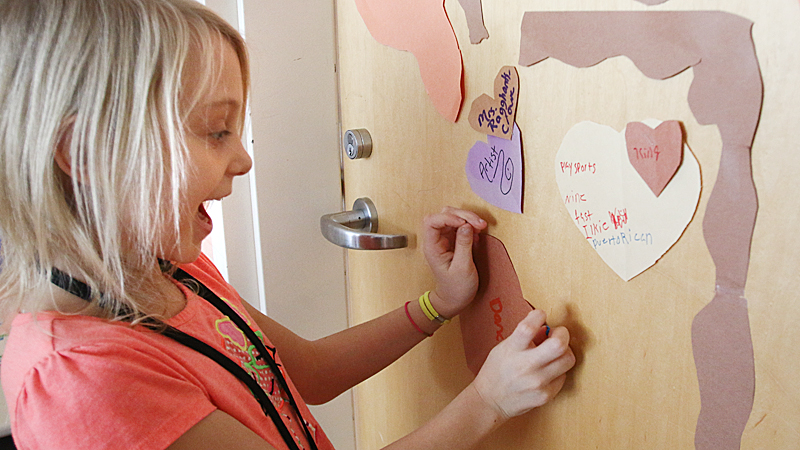Creating calm in the classroom

YOUNGSTOWN
When Wilson Elementary students walk into Anna Ragghanti-Crowe’s classroom, they enter a “Creative Studio.”
“In my studio [classroom], I want to give students opportunities to look at things differently, more creatively,” explained Ragghanti-Crowe, Wilson intervention specialist. “And when they walk in here, this room calms them down.”
The walls are lined with abstract images of the sun and moon, alphabet letters with corresponding artists’ names, inspiring messages, bulletin boards with pictures of yoga poses and more.
It is a peaceful environment – a place for students to unwind and be creative while learning at the same time, Ragghanti-Crowe said.
Students relax on bean bag chairs, enjoying the laid-back feel to this unconventional classroom.
“It’s nice to just sit on them instead of a regular chair,” said second-grader Mia Wells.
Another benefit to the bean bag chair seating is that it fosters students to build with them, learning about weight distribution and shaping the somewhat malleable objects.
“It’s important for them to create in here while they are learning, because I want to know who my students are and what makes them, them,” Ragghanti-Crowe said. “I want to understand who they are as people and how they learn.”
Ragghanti-Crowe’s studio/classroom isn’t the only thing that creates a calm feel for her students; her more than 20 years of yoga practicing does, as well.
Second-grader Burnie Fraim said he enjoys doing the poses and stretches before class – they just make him feel good.
“I like the namaste,” Fraim said.
Namaste is a gesture of prayerful hands over the heart, acknowledging the soul in others by your own soul.
Doing yoga isn’t just calming, but is also an educational tool that helps Ragghanti-Crowe tap into some social-emotional learning.
“It’s getting them aware of their bodies, giving them command over their bodies and learning body awareness,” she said.
In all, Ragghanti-Crowe’s long-standing teaching practices help grow well-rounded students.
“They get to feel more comfortable being themselves, and it’s easier for them to be creative and productive when they do.”
 43
43
